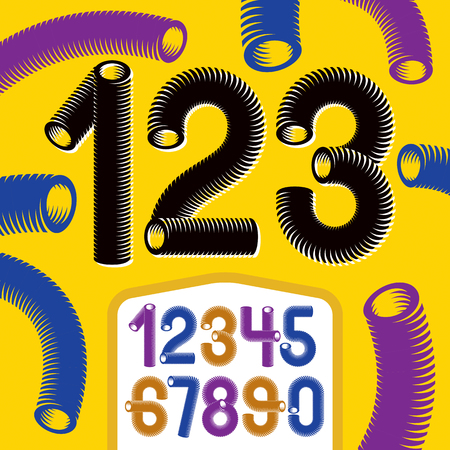Introduction: Delving into the British Mindset
The British psyche is a complex tapestry woven from centuries of history, tradition, and evolving social norms. When examining the symbolism of death in dreams, it is crucial to understand how these layers have shaped the way Britons interpret their subconscious experiences. Unlike many cultures that might view dreams about death with overt fear or superstition, the British approach is often subtler and deeply contextualised by a unique blend of stoicism, wit, and an enduring relationship with both mortality and the macabre. This exploration seeks to unpack not only the psychological underpinnings but also the cultural narratives and historical influences that inform how people across the United Kingdom perceive and react to dreams featuring death. By tracing these intertwined threads—spanning folklore, literature, religious beliefs, and modern psychology—we can better appreciate why dreams of death hold a distinctive place within the British collective imagination.
2. Cultural Narratives: Death and the British Collective Consciousness
To unpack the British psyche, it is essential to consider how deeply cultural narratives have shaped perceptions of death and its manifestation in dreams. The British collective consciousness is a tapestry woven from centuries of folklore, literature, and national events, each adding unique threads to attitudes surrounding mortality. These influences often surface in dream symbolism, reflecting not just personal anxieties but also shared societal values and fears.
Folklore and Superstition: Shaping Dream Symbolism
British folklore is replete with tales of spectral visitations, omens, and portents tied to death. The figure of the Grim Reaper, the wailing banshee (borrowed from Celtic traditions), and ghostly apparitions such as the headless horseman or the White Lady have all become archetypes within the British imagination. Such stories reinforce the idea of death as both an inevitable fate and a mysterious passage, influencing how Britons interpret dreams about dying or encountering the deceased.
Key Folkloric Symbols in British Dreams
| Symbol | Folkloric Origin | Common Dream Interpretation |
|---|---|---|
| The Grim Reaper | Medieval allegories | Anxiety about change or endings |
| Banshees Wail | Celtic myth (Ireland/Scotland) | Forewarning of loss or transformation |
| Ghostly Apparitions | Victorian ghost stories | Unresolved grief or unfinished business |
Literature: From Shakespeare to Modernity
The literary tradition in Britain has further cemented nuanced views of death. Shakespeare’s “Hamlet” contemplates mortality with iconic soliloquies, while Dickens’ “A Christmas Carol” personifies death as a means for self-reflection and redemption. These works instil a narrative that death in dreams may symbolise introspection, moral reckoning, or the possibility of renewal.
Influential Literary Works and Their Impact on Death Imagery in Dreams
| Work | Author | Thematic Influence on Dream Symbolism |
|---|---|---|
| Hamlet | William Shakespeare | Meditation on mortality and existential dread |
| A Christmas Carol | Charles Dickens | Redemption through confronting ones end |
| The Waste Land | T.S. Eliot | Anxiety about societal decay and personal loss |
National Events: War, Remembrance, and Public Rituals
The legacy of two World Wars, public commemorations like Remembrance Sunday, and national mourning for figures such as Princess Diana have all reinforced communal responses to death. These rituals do not just shape waking attitudes—they enter the dreamscape as symbols of collective grief or unity in the face of loss.
Cultural Transmission into Dreams: A Systematic View
The convergence of these narratives—folklore’s supernatural motifs, literature’s philosophical explorations, and national rituals—imbues British dreams about death with layers of meaning distinct from other cultures. For many Britons, dreaming of death is rarely just about fear; it often encodes messages about legacy, memory, change, and reconciliation with life’s impermanence.

3. Decoding Symbolism: What Death Represents in British Dreams
When dissecting the symbolism of death in the dreams of Britons, it is vital to approach the subject with an understanding of both collective cultural narratives and individual psyche. The British tendency towards understatement, emotional reserve, and an often wry acceptance of life’s uncertainties all inform how death manifests symbolically within dreams.
Common Motifs in British Dream Narratives
Several recurring themes emerge when analysing dream accounts across the UK. Dreamers frequently report visions involving funerals, cemeteries, or simply the act of dying. However, these motifs rarely signal literal mortality; instead, they serve as metaphors for transformation, endings, or unresolved issues. In a society where open discussion of strong emotions is sometimes discouraged, such imagery may function as a psychological outlet for feelings that are otherwise repressed.
Transformation and Renewal
Death in dreams often symbolises the closing of one chapter and the beginning of another—a notion deeply embedded in British literature and folklore. The motif may reflect anxieties about change, be it career transitions, moving house (a particularly significant event given Britain’s attachment to home), or shifting family dynamics. Here, death is not feared but rather acknowledged as part of the cycle of renewal.
Mourning and Emotional Restraint
The British stiff upper lip frequently finds its way into dream symbolism. Instead of overt displays of grief, dreamers might encounter subdued funerals or silent mourners—representations of contained sorrow and social expectation. These dreams may act as subtle prompts for individuals to confront and process grief that is otherwise kept below the surface during waking hours.
Societal Themes: Class, History, and Continuity
Dreams involving death can also tap into broader societal narratives: class divides manifested through elaborate funerals versus modest ceremonies, historical references such as war memorials, or even a sense of continuity with ancestors. Such imagery reflects both personal concerns and collective memory—an ongoing dialogue between individual experience and national identity.
By systematically unpacking these motifs and their underlying meanings, we gain insight into how British dreamers use the symbolism of death to navigate personal transitions, emotional complexities, and their place within a storied cultural landscape.
4. The Influence of Stoicism and Stiff Upper Lip
The British psyche is often characterised by stoicism and the so-called “stiff upper lip”—traits that have deep historical roots and continue to shape emotional expression today. When examining dreams, especially those featuring death, these cultural attitudes significantly influence both their content and interpretation.
Manifestation of Death in Dreams: A Product of Restraint
Unlike cultures where overt emotional expression is encouraged, the British tendency towards emotional reserve means that the symbolism in dreams often becomes more indirect or subdued. Rather than dramatic scenes of death or grief, dreams may feature subtle representations such as wilting flowers, empty rooms, or fading light. These metaphors reflect an internalisation of emotion, mirroring how many Britons process loss or anxiety in waking life.
How Stoicism Shapes Dream Content
| Stoic Trait | Dream Manifestation | Typical Interpretation |
|---|---|---|
| Restraint | Muted or symbolic imagery (e.g., closed doors) | Suppressed feelings about change or endings |
| Emotional Reserve | Absence of overt mourning or chaos | Desire to maintain composure in face of fear |
| Avoidance of Vulnerability | Distant observers rather than active participants in dream events | Reluctance to confront mortality or deep anxieties directly |
The Role of the “Stiff Upper Lip” in Dream Interpretation
This national ethos encourages individuals to downplay personal distress, even within the privacy of their subconscious. As a result, when interpreting dreams about death, Britons may be less inclined to admit vulnerability or seek external support. Instead, they often approach such dreams with pragmatism—viewing them not as harbingers of doom but as signals for quiet self-reflection or reminders to carry on stoically despite underlying fears.
5. Modern Britain: Shifting Attitudes and Dream Interpretation
Contemporary Britain is marked by dynamic social change, with multiculturalism and secularisation at the forefront of its evolving identity. These shifts have profound implications for the interpretation of dreams, especially those involving death, as traditional frameworks are challenged and new perspectives take root.
Multiculturalism: A Tapestry of Interpretations
The influx of diverse cultures has introduced a broad spectrum of beliefs surrounding death and the afterlife. In cities like London, Birmingham, and Manchester, British dreamers are increasingly exposed to interpretations rooted in South Asian, African, Middle Eastern, and Eastern European traditions. This amalgamation challenges monolithic views; for example, while some might interpret death in dreams as an omen or warning, others may see it as a sign of transformation or spiritual renewal. The blending of these perspectives means that contemporary Britons often approach such dreams with a broader, less fatalistic mindset.
Scepticism and Secularisation: Death Reimagined
The decline of organised religion in Britain has also reframed attitudes towards death—both in waking life and within the subconscious. As secular values become more prevalent, there is a tendency to view dreams through psychological or scientific lenses rather than as messages from the divine or supernatural. Death in dreams is thus more likely interpreted as symbolic of endings, personal growth, or unresolved anxieties rather than literal premonitions. This rationalist approach reflects a pragmatic national character: emotions are acknowledged but not allowed to overwhelm reasoned analysis.
Digital Influence: A New Arena for Dream Sharing
The rise of online forums and social media platforms has created communities where Britons freely discuss their nocturnal visions without fear of stigma. Exposure to global interpretations further dilutes the dominance of traditional British symbolism. As people share their experiences, they encounter new ways to understand death in dreams—sometimes adopting alternative viewpoints that resonate on a personal level rather than adhering strictly to inherited cultural narratives.
In summary, modern Britain’s shifting social landscape invites a pluralistic and nuanced engagement with the symbolism of death in dreams. As multiculturalism enriches interpretative possibilities and secularisation encourages analytical detachment, Britons today are reimagining what it means to dream—and die—within the context of an ever-evolving national psyche.
6. Practical Insights: Navigating Death Dreams with British Sensibility
When it comes to interpreting and discussing dreams of death, the British psyche leans towards a nuanced, reflective approach that is both understated and deeply analytical. The British tradition of emotional restraint often means that death in dreams is not confronted head-on but explored through subtle enquiry and gentle conversation. Rather than rushing to dramatic conclusions, many Britons prefer to “mull things over” – a phrase capturing the quintessentially British practice of quiet contemplation before action.
Interpreting with Cultural Context
Understanding the symbolism of death in dreams requires an appreciation for Britain’s rich literary and historical legacy. Drawing on references from Shakespearean tragedy or Victorian gothic tales, one can view death as a metaphor for transformation rather than finality. When reflecting on such dreams, it helps to ask oneself questions like, “What aspect of my life might be coming to an end?” or “Is this dream inviting me to embrace change?” This methodical self-questioning aligns with the British tradition of introspection and self-deprecation—never assuming too much importance yet taking inner experiences seriously.
Processing Through Conversation
In British society, direct conversations about death are often avoided; instead, humour and understatement provide a buffer. When discussing troubling dreams with friends or family, one might preface the conversation with a light-hearted remark (“You’ll think I’m barmy, but…”) to diffuse discomfort. Book clubs and informal gatherings offer safe spaces for sharing dream experiences in an oblique way—often using fictional characters as proxies for personal revelations.
Rituals and Mindfulness Practices
Grounding dream analysis in everyday rituals can help process unsettling imagery. For example, the simple act of making tea—a national pastime—can serve as a mindful pause for reflection after a distressing dream. Keeping a dream journal by the bedside allows for private rumination before seeking external input. For those who find solace in tradition, attending church services or visiting local heritage sites can provide opportunities for quiet contemplation and connection with collective memory.
Moving Forward: Embracing Change with Stoicism
The British attitude towards adversity has long been encapsulated by phrases like “Keep calm and carry on.” Interpreting death dreams through this lens means accepting them as part of life’s ongoing narrative rather than omens of doom. By engaging in thoughtful analysis, sharing selectively, and drawing on time-honoured rituals, individuals can navigate these powerful symbols with resilience and dignity—hallmarks of the British sensibility.


